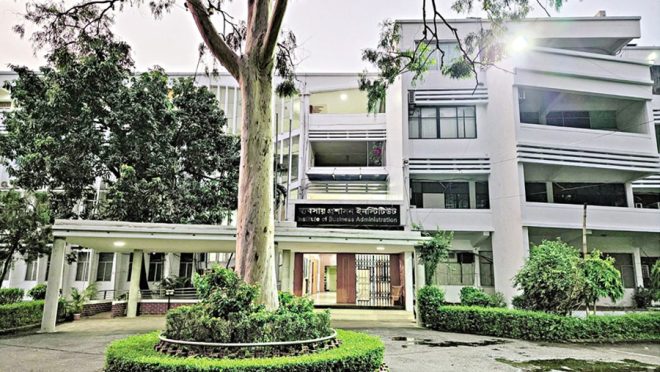What to keep in mind preparing for the IBA Admission Test - Part 2
IBA BBA and MBA admission test is unexplored terrain for all candidates, but the subject matter is not unfamiliar. A focused approach to studying and strategising can make all the difference.
What to keep in mind preparing for the IBA Admission Test - Part 2
IBA BBA and MBA admission test is unexplored terrain for all candidates, but the subject matter is not unfamiliar. A focused approach to studying and strategising can make all the difference.

In Part 1, we discussed tips and strategies pertaining to the English section of the admission test. Maths and Analytical sections come with their set of challenges when it comes to effective preparation and delivery:
A big uncertainty factor and demotivator in the Maths section is when a candidate does not know if they are missing out on effective practice and then they cannot answer in the mock tests timely despite going through the whole question bank as instructed. Mock tests are held when the admission is knocking at your door. A reality check that you have been doing it all wrong at this stage can crush your confidence. This happens because when practising a new chapter from a question bank, we tend to take our time. So, when practising, after getting familiar with the theories and testing the waters with the first 5-10 questions, start timing your practice.
- Divide the chapter in half.
- Record the time you are taking to solve every set of x questions with a stopwatch.
- Get an idea of the average.
- Solve the 2nd set of x questions each with a timer set at a time lower than the average.
The ideal average time for solving in the admission test is 1.5 minutes. However, the nature of some chapters in the question bank requires an average of 2-3 minutes. This is where having an idea of the average time comes in handy.
The entire maths section can be divided into 25-30 chapters, some more distinct than others. Analyse a few past year questions to see how many are from each concept. Distribute the chapters over the span of your preparation journey based on the following:
- Frequency level (E.g. High – Profit-loss, Low- Sequence)
- Clusters of similar concepts (E.g. doing percentage and profit-loss together)
- Strengths and weaknesses (E.g. Leaving out a high-frequency chapter you’re weak at and doing three low-frequency ones you’re good at instead)
This helps in effective preparation and leaves room for contingencies in case the exam is held before the anticipated time. As for English, finishing the high-frequency words before jumping into the Wordsmart bandwagon can help since it is in alphabetical order and a candidate can realistically absorb 75%, leaving out important words from some letters.
In both Maths and Analytical sections, the goal of solving should be to get acquainted with the level of difficulty and get swifter with calculations. You should remind yourself from time to time that you will not get common from the questions you are solving. The takeaway is to learn which specific direction to start thinking from, to be able to trim down equation solving or option testing. It cuts down on time which would otherwise be wasted in finding irrelevant values.
As mentioned, snapping out of the mentality of expecting common questions is imperative. However, in mock tests, the questions do repeat from the sets the candidates practised at home. Mastering those questions at home and delivering them smoothly at mock tests to get a satisfactory result can be a much-needed confidence booster. This can also result in the unintended outcome of subconsciously expecting 4-5 questions from the comfort zone. So, upon encountering a completely new set of questions in the admission exam makes them anxious. A mentality to apply concepts learnt rather than practice delivered can give candidates an edge over their competitors who finished entire question banks thrice.
Perhaps the biggest catch in the admission exam is the requirement of an individual pass bar of 60% in each section. And in each intake, at least one section is comparatively harder and either of the other two is easier. This can prove to be a trap, more so if the candidate chooses to answer the tougher section last. So, it is wise to switch sections after answering around 70-75% (subject to accuracy level) in a section even if you can easily score 100% in it. There is always the chance to come back after securing 60% in all sections. Besides, the potential marks lost do not factor into the securing a seat part. It can only contribute to getting a higher rank within the top 120 because getting 60% in each section usually proves to be sufficient, given the balanced difficulty level.
IBA BBA and MBA admission test is unexplored terrain for all candidates, but the subject matter is not unfamiliar. A focused approach to studying and strategising can make all the difference.


